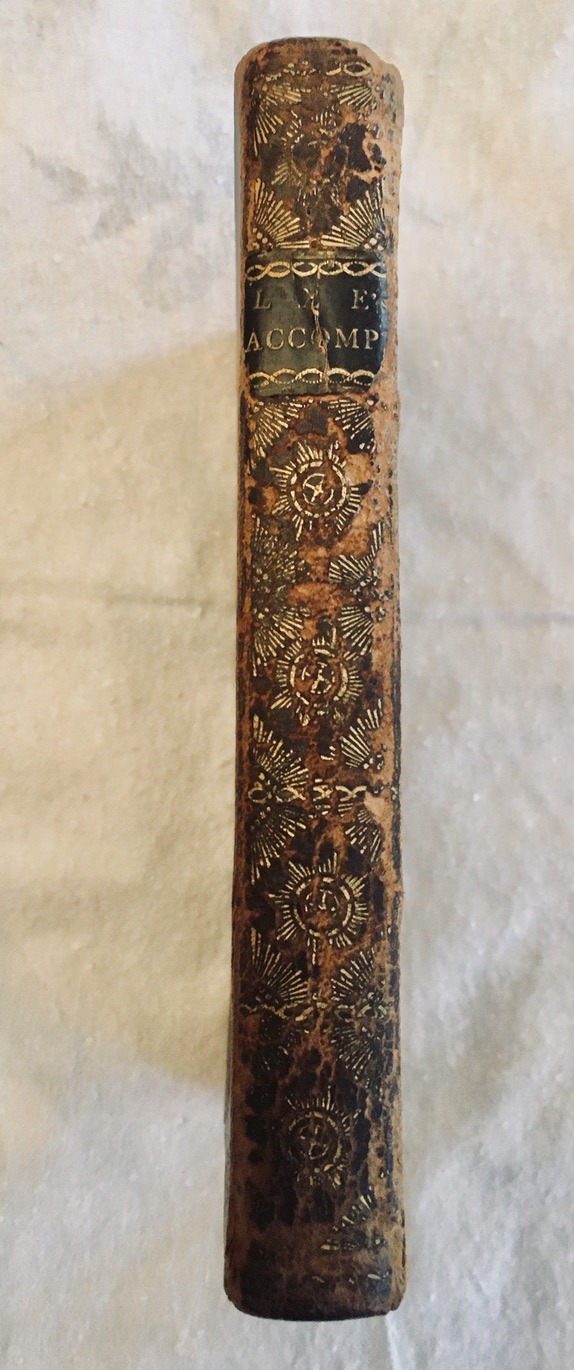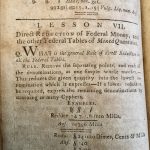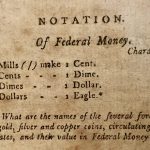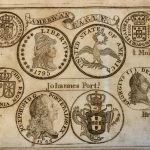There are a lot of moving parts to this post, so let’s start at the beginning.

Our Historian Margery Boyden, recently received an inquiry from Dave Cleaves, an antiquarian book collector who acquired a 1797 book on arithmetic, one of the first written specifically for North America and the new US currency. He was curious if the Foundation might shed light on whom the owner might have been. Of course Margery was on the case and soon had a bead on who Johnston Scudder was and smelled a story.
She sent me this email:
On Sep 25, 2020, at 1:04 AM, Margery Boyden <historian@scudder.org > wrote: This came from an inquiry to the historian and I asked if he would like to write it up. I think his pictures are pretty cool and the short article about the artifact is fun.
Philip Johnston Scudder, b. 1791, was an elder brother to Dr. John Scudder, just 2 years older which makes it all the more interesting to me. Maybe Dr. John studied math out of this very same book. Maybe you might want to add some comment to that effect in an introduction or ? Please get back to me about whether you will use this as a feature.
I of course, thought this was a wonderful example of how the Foundation can assist in the research documenting the contributions and authenticity of Scudders through the centuries. The book that Dave Cleaves inquired about, in all likelihood, provided Dr. John Scudder a solid foundation in math and money before setting off to India. It is a tangible part of the Scudder story. At Margery’s urging, Dave kindly agreed to share his story and photographs. I hope you find them as interesting as Margery and I have.
American Accomptant:
A summary and photographs by, Dave Cleaves
 I recently added a book to my library that I think will be of interest to this group. First, a bit about myself. I’ve always been a collector of sorts, and my interests include old books, old coins, and in particular old books about coins.
I recently added a book to my library that I think will be of interest to this group. First, a bit about myself. I’ve always been a collector of sorts, and my interests include old books, old coins, and in particular old books about coins.
The book under discussion here is a copy of “The American Accomptant, Being a Plain, Practical and Systematic Compedium of Federal Arithmetic; in Three Parts: Designed for the Use of Schools and Specially Calculated for the Commercial Meridian of the United States of America.” The book was written by Chauncey Lee, published in 1797. The book was published 5 years after the United States began minting its own coinage in 1792. This copy came into my possession (like many of the books in my library) by way of eBay. This particular arithmetic book is of interest to numismatists for two reasons.
 First, the front engraving opposite the title page illustrates gold coins in circulation at the time, including a Portuguese Half Moidore, a Portuguese Johannes, a French Guinea, a British Guinea, a Spanish Pistole, and most importantly an American Eagle ($10 gold piece). The engraving is the first known published illustration of a United States coin.
First, the front engraving opposite the title page illustrates gold coins in circulation at the time, including a Portuguese Half Moidore, a Portuguese Johannes, a French Guinea, a British Guinea, a Spanish Pistole, and most importantly an American Eagle ($10 gold piece). The engraving is the first known published illustration of a United States coin.
 The second reason is that the book is often credited as being the first time that the “$” sign was used in print to represent a dollar, instead of writing out dollar or dol. This, like many things, is a bit contentious, as the curvey S and double slash lines are a typographical approximation of the symbol that we are all familiar with, but not close enough to satisfy everyone today. Also in the back of the book is a list of the subscribers who had agreed in advance to purchase a copy before the book went into production. Included in the list are John Adams, New York Governor John Jay, and Vermont Governor Thomas Chittenden.
The second reason is that the book is often credited as being the first time that the “$” sign was used in print to represent a dollar, instead of writing out dollar or dol. This, like many things, is a bit contentious, as the curvey S and double slash lines are a typographical approximation of the symbol that we are all familiar with, but not close enough to satisfy everyone today. Also in the back of the book is a list of the subscribers who had agreed in advance to purchase a copy before the book went into production. Included in the list are John Adams, New York Governor John Jay, and Vermont Governor Thomas Chittenden.
 Of interest to this group though is the book owners name written on the title page, showing the book as “Johnston Scudder’s” property. Curious about the books previous owner, a Google search on the Scudder name brought me to the Scudder Ancestors in America web site, and subsequently to Marge, the site historian. I sent a query asking if there was a Johnston Scudder born in the mid- to late-1700’s, and received back a very nice email about a possible match – Philip Johnston Scudder was born in New Jersey in 1791, the son of Joseph Scudder and Maria Johnston. Both of his grandfathers were Revolutionary War heroes who gave their lives in the conflict. Philip Johnston of Hunterdon, NJ died in the Battle of Long Island, 27 August 1776. Nathaniel Scudder was shot and killed in a skirmish near Shrewsbury, Monmouth, NJ on 16 October 1781. Nathaniel was the only member of the Continental Congress to die in battle during the American Revolution.
Of interest to this group though is the book owners name written on the title page, showing the book as “Johnston Scudder’s” property. Curious about the books previous owner, a Google search on the Scudder name brought me to the Scudder Ancestors in America web site, and subsequently to Marge, the site historian. I sent a query asking if there was a Johnston Scudder born in the mid- to late-1700’s, and received back a very nice email about a possible match – Philip Johnston Scudder was born in New Jersey in 1791, the son of Joseph Scudder and Maria Johnston. Both of his grandfathers were Revolutionary War heroes who gave their lives in the conflict. Philip Johnston of Hunterdon, NJ died in the Battle of Long Island, 27 August 1776. Nathaniel Scudder was shot and killed in a skirmish near Shrewsbury, Monmouth, NJ on 16 October 1781. Nathaniel was the only member of the Continental Congress to die in battle during the American Revolution.
It could be that the book belonged to Philip Johnston Scudder, and that he preferred to go by his middle name instead of his first name. More likely to me, though, is that the book could have been owned by Philip’s parents, Joseph Scudder and his wife Maria, for use by the Johnston Scudder family in educating both of their sons; Philip and his younger brother John. We may never know for sure, but I enjoyed the hunt for information, and also with sharing my find with today’s Scudders.

















0 Comments